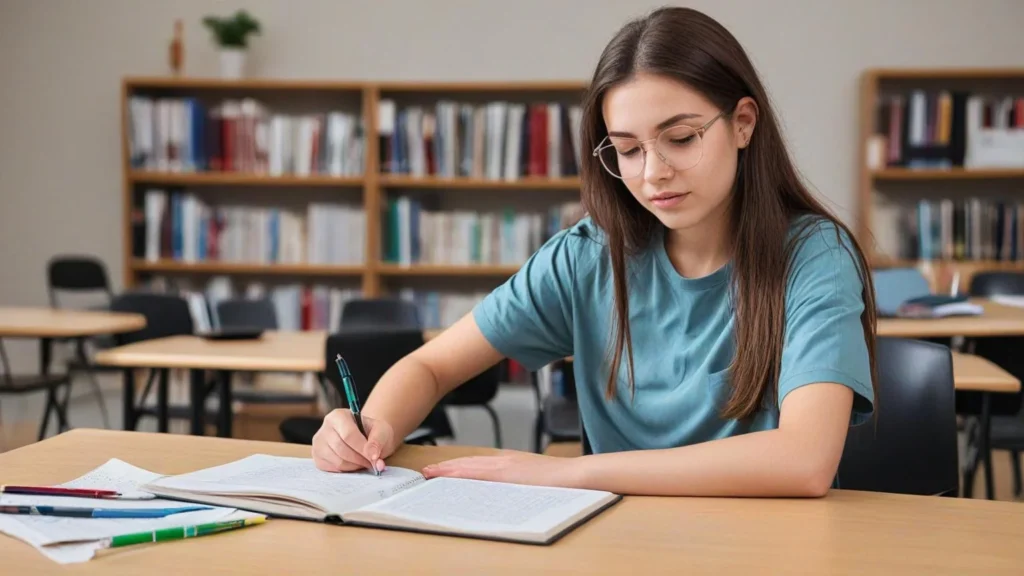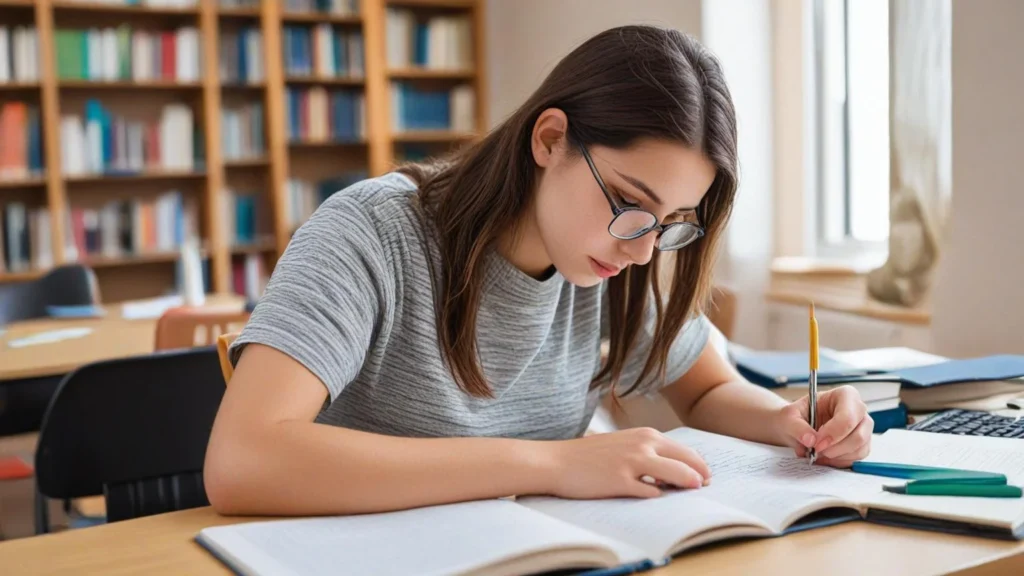Studying effectively is crucial for academic success, yet many students struggle to find the best methods. This comprehensive guide will cover the most effective study techniques, three essential study skills, the five steps to effective studying, and the best environments for studying. By the end of this article, you’ll have the tools you need to boost your learning and improve your grades.
Which Is the Most Effective Study Technique?
Active Recall
Active recall is widely considered one of the most effective study techniques. It involves actively stimulating your memory during the learning process, rather than passively reading or listening to information. This technique forces your brain to retrieve information, strengthening your memory and enhancing understanding.
How to Practice Active Recall:
- Use Flashcards: Write questions on one side and answers on the other. Test yourself regularly.
- Practice Testing: Take practice quizzes or create your own based on the material.
- Teach Others: Explain the material to a study buddy or even to yourself out loud.
Example:
- When studying for a history test, use flashcards to quiz yourself on important dates and events. Instead of just reading the textbook, actively try to recall the information without looking at your notes.
What Are 3 Effective Study Skills?

Time Management
Effective time management helps students allocate their study time wisely, avoiding last-minute cramming and reducing stress. It involves planning and organizing study sessions to make the most efficient use of time.
Tips for Time Management:
- Create a Study Schedule: Divide your study time into manageable chunks and stick to the plan.
- Set Priorities: Focus on the most important and challenging subjects first.
- Use a Timer: Work in short, focused bursts (e.g., 25 minutes of studying followed by a 5-minute break).
Example:
- Schedule study sessions for each subject throughout the week, dedicating more time to challenging courses like math or science. Use a timer to keep track of study periods and breaks.
Note-Taking
Good note-taking helps students retain information and serves as a valuable resource for review. Effective note-taking involves summarizing key points, using bullet points or diagrams, and highlighting important information.
Tips for Effective Note-Taking:
- Use the Cornell Method: Divide your notes into main ideas, details, and a summary section.
- Be Concise: Focus on key concepts rather than writing everything verbatim.
- Review and Revise: Go over your notes after class to fill in any gaps and reinforce learning.
Example:
- During a lecture, use the Cornell Method to organize your notes. Write main ideas in one section, details in another, and a summary at the bottom. After class, review your notes to ensure you understand the material.
Active Reading
Active reading involves engaging with the text through questioning, summarizing, and highlighting key points. This technique helps improve comprehension and retention of the material.
Tips for Active Reading:
- Ask Questions: Before reading, think about what you want to learn. While reading, ask questions about the content.
- Highlight and Annotate: Mark important passages and write notes in the margins.
- Summarize: After reading, write a brief summary of the main points.
Example:
- When reading a biology textbook, highlight key terms and write questions in the margins. After finishing a section, summarize the main points in your own words to reinforce understanding.
What Are the 5 Steps to Effectively Study?

Set Clear Goals
Start by setting specific, achievable study goals. Having clear objectives helps focus your efforts and measure your progress.
Tips for Setting Goals:
- Be Specific: Define what you want to accomplish (e.g., “Learn the causes of World War I”).
- Set a Time Frame: Decide how long you will study each topic.
- Make It Measurable: Use criteria to assess your understanding (e.g., “Be able to explain the causes without looking at notes”).
Example:
- Set a goal to learn and explain the causes of World War I within one hour. Write down the main causes and review them until you can recall the information without assistance.
Organize Your Study Space
A well-organized study space helps reduce distractions and increase productivity. Ensure your study area is comfortable, well-lit, and equipped with all necessary materials.
Tips for Organizing Your Study Space:
- Remove Distractions: Keep your phone and other distractions out of reach.
- Gather Supplies: Have your textbooks, notes, and other study materials ready.
- Create a Comfortable Environment: Ensure proper lighting, comfortable seating, and a quiet atmosphere.
Example:
- Set up a study space at your desk with all your textbooks, notebooks, and pens. Remove any distractions, such as your phone, and make sure the area is well-lit and quiet.
Use Study Techniques
Implement effective study techniques such as active recall, spaced repetition, and the Pomodoro Technique to enhance your learning.
Tips for Using Study Techniques:
- Active Recall: Regularly test yourself on the material.
- Spaced Repetition: Review information at increasing intervals to enhance retention.
- Pomodoro Technique: Study in short, focused sessions with breaks in between (e.g., 25 minutes of study, 5-minute break).
Example:
- Use flashcards to practice active recall, review the material over several days using spaced repetition, and study in focused 25-minute sessions with 5-minute breaks using the Pomodoro Technique.
Review and Revise
Regular review and revision of the material are essential for long-term retention. Go over your notes, summaries, and practice problems frequently to reinforce your understanding.
Tips for Review and Revision:
- Schedule Regular Reviews: Set aside time each week to review previously learned material.
- Use Summaries: Create summaries of key points and review them regularly.
- Practice Problems: Solve practice problems to test your understanding.
Example:
- Set aside time every Sunday to review your notes and summaries from the previous week. Solve practice problems and revisit challenging topics to ensure you retain the information.
Test Yourself
Self-testing helps gauge your understanding and identify areas that need improvement. Use practice tests, flashcards, and quizzes to assess your knowledge.
Tips for Self-Testing:
- Use Flashcards: Test yourself on key terms and concepts.
- Take Practice Tests: Simulate exam conditions with practice tests.
- Identify Weak Areas: Focus on topics where you struggle and review them.
Example:
- Create flashcards for key terms and concepts and test yourself regularly. Take practice tests to simulate exam conditions and identify areas where you need further review.
Which Technique Is Most Suitable to Study In?
The Pomodoro Technique
The Pomodoro Technique is highly suitable for studying because it promotes focused work sessions and regular breaks, enhancing productivity and preventing burnout. It involves working for 25 minutes, followed by a 5-minute break, and repeating this cycle.
How to Use the Pomodoro Technique:
- Set a Timer: Work for 25 minutes on a specific task.
- Take a Break: After 25 minutes, take a 5-minute break.
- Repeat: Repeat this cycle four times, then take a longer break (15-30 minutes).
Example:
- Study for 25 minutes, focusing on a single subject or task. Take a 5-minute break to stretch, grab a snack, or relax. Repeat this process four times, then take a longer break to recharge.
Conclusion
Effective study techniques are essential for academic success. By incorporating active recall, time management, note-taking, and active reading into your study routine, you can improve your learning and retention. Setting clear goals, organizing your study space, using proven study techniques, reviewing regularly, and testing yourself are all crucial steps in effective studying. The Pomodoro Technique, with its focused work sessions and regular breaks, is particularly suitable for studying.
Summary Table of Pros and Cons
| Pros of Effective Study Techniques | Cons of Effective Study Techniques |
|---|---|
| Improves retention and understanding | Requires discipline and consistency |
| Reduces stress and enhances productivity | May require initial effort to develop new habits |
| Helps in achieving better academic performance | Can be time-consuming to implement initially |
| Encourages active engagement with the material | Some techniques may not suit every learning style |
In conclusion, adopting these study techniques can transform your academic journey, making learning more efficient and enjoyable. By understanding and applying these methods, you’ll be well-equipped to excel in your studies and achieve your educational goals.

